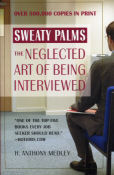| What REALLY goes on in a job interview? Find out in the new revision of "Sweaty Palms: The Neglected Art of Being Interviewed" by Tony Medley, updated for the world of the Internet . Over 500,000 copies in print and the only book on the job interview written by an experienced interviewer, one who has conducted thousands of interviews. This is the truth, not the ivory tower speculations of those who write but have no actual experience. "One of the top five books every job seeker should read," says Hotjobs.com. Click the book to order. Now also available on Kindle. | |
|
by Tony Medley 152 minutes R. This comes right out and says it’s a true story. Certainly the people, Sir Jean de Carrouges (Matt Damon), Jacques Le Gris (Adam Driver), Marguerite de Carrouges (Jodie Comer), Pierre d’Alençon (Ben Affleck) the King’s cousin and a baron at the Court of Argentan, and King Charles VI (Alex Lawther) were real people who actually lived. And it is true that Carrouges and Le Gris did fight the last legal duel to the death in 1386 before King Charles and a huge crowd of spectators. The basis of the story is that Marguerite, the wife of Sir Jean, claimed that Le Gris raped her while she was alone in her castle, which Le Gris denies. Carrouges demanded that Le Gris be tried for rape. It is based on the book, “The Last Duel: A True Story of Trial by Combat in Medieval France,” 2004, by Eric Jager, a UCLA English professor. The question is, can Jager be believed? In validation, according to the Production Notes: Jager’s extensive research involved 10 years of tracking down, translating and scrutinizing centuries-old historical records – everything from chronicles, legal records and property deeds to military receipts, architectural plans and historical maps. “I found some documents containing errors or omissions. I also found documents that had either been entirely overlooked or had been mentioned only in very obscure places and that didn’t seem to be a part of what historians and scholars knew about the case,” says Jager. “So one of the first big surprises for me was that what historians and legal scholars have been saying for centuries, that Marguerite was mistaken, or even SEQ CHAPTER \h \r 1that she had lied, didn’t seem to me to be true.” Written by Nicole Holofcener, Matt Damon & Ben Affleck and directed by Ridley Scott, and knowing that the story has a firm basis in fact, this is a spellbinding film. Although too long by far, the acting is exceptional. While Damon gives an outstanding performance as the unhappy warrior Carrouges, and Affleck creates an attractive, carefree, happy-go-lucky attitude as the superior of Carrouges and Le Gris, the person who really stands out is Comer in a difficult role. She is more than just beautiful; she can act. What makes it even more dramatic is that if Carrouges does not conquer Le Gris, Marguerite will be burned alive immediately because the point of the duel is to let God tell people the truth! And if Le Gris wins, it would be the conclusion that Marguerite had lied and the penalty for that is to be burned alive. Much of the film was shot on location in the Périgord Noir region in the southwest part of France (as an immaterial aside I have a poster on wall of a Périgord Château that I bought in France decades ago). Among the castles and locations used are, Château de Beynac, Château de Fénelon in Sainte-Mondane, Château Berzé-le-Châtel, and The city of Monpazier. All add greatly to the medieval ambience that the film so expertly recreates. With so many scenes shot inside these ancient buildings cinematographer Dariusz Wolski’s big hurdle was fabricating natural light for scenes being shot inside the dark, almost windowless castles. This is not The Knights of the Round Table (1953) or King Richard and the Crusaders (1954), those shmaltzy phantasmagoric ‘50s attempts at recreating feudal Europe. Ridley Scott recreates a believable 14th Century France that is gritty. The battle scenes are realistic, and the staging of the duel is convincing. The movie tries to tell the story from the POV of each, Sir Jean, Le Gris, and Marguerite, sort of neo-Rashomon (1950), and this doesn’t work as well because scenes are repeated three times, to little avail; frankly, I couldn’t see much difference. Some serious editing would make it a lot better. How many times do we have to view the rape scene? Did this actually happen? Yes, absolutely. Obviously, dialogue has been invented and some factual elements have been added, but the basis of the story is accurate, and the filmmakers should be proud of their work here. It’s a nice lesson in history and a treat for the audience.
|
|
|
|
|
